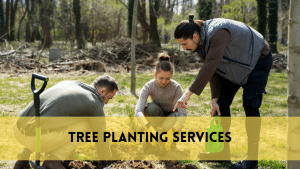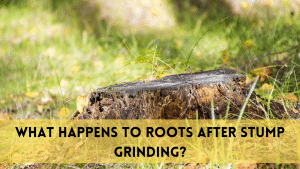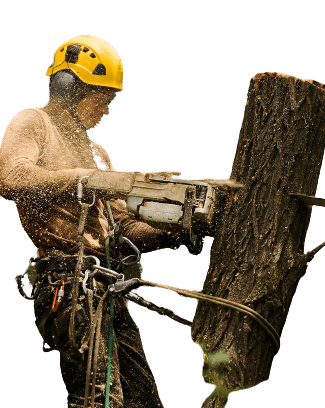Trees are not simply quiet onlookers of the evolving seasons; they are the resolute watchmen of our current circumstance. They give us oxygen, cover for natural life, and their transcending presence adds a certain appeal to our scenes. Tall trees, with their glorious coverings and age-old insight, are particularly striking. They’re living landmarks that have endured everyday hardship, offering shade, food, and a feeling of serenity to their general surroundings.
Be that as it may, however surprising as tall trees seem to be, they face a quiet, crawling danger – plants. Plants, while frequently beautiful and captivating by their own doing, can represent a serious danger to the wellbeing and life span of tall trees. These obtrusive climbers, whenever left unrestrained, can bit by bit cover, debilitate, and even kill the trees they connect themselves to. It’s an exemplary instance of excellence transforming into a brutal issue. Learn How to remove vines from tall trees?
Understanding the Types of Vines
A. Identifying the common types of vines that climb trees
Before we dive into the specialty of plant evacuation, understanding the enemy is fundamental. Plants come in different shapes and sizes, each with its special qualities. Here are a few normal kinds of plants that you could experience while managing tall trees:
English Ivy (Hedera helix): Perceived by its reflexive, dim green leaves, English Ivy is a productive climber known for gripping constantly to tree trunks. It can shape thick mats that block daylight, hindering the tree’s development and wellbeing.
Kudzu (Pueraria montana): Frequently alluded to as “the plant that ate the South,” Kudzu is famous for its quick development. Its huge, compound leaves and contorting plants can rapidly overwhelm trees, delivering them incapable to photosynthesize appropriately.
Virginia Creeper (Parthenocissus quinquefolia): Virginia Creeper is known for its striking red or orange foliage in the fall. While it might appear to be innocuous, it can cover trees with a thick organization of ringlets, possibly harming the tree’s husk and appendages.
Wisteria (Wisteria spp.): Wisteria plants are appreciated for their pendulous bunches of fragrant roses. Notwithstanding, they can turn out to be unbelievably weighty while mature, overloading branches and causing underlying harm to trees.
Poison Ivy (Toxicodendron radicans): Poison Ivy isn’t just an irritation for people yet additionally for trees. It moves by appending flying rootlets to the tree’s covering, possibly causing harm and disturbance.
B. Realizing the potential mischief brought about by plants to tree wellbeing
Plants, while apparently innocuous or even gorgeous, can cause extreme damage for tall trees in different ways:
Decreased Daylight: Plants can make a thick covering that blocks daylight from arriving at the tree’s leaves. This represses photosynthesis, the fundamental cycle that permits trees to create energy from daylight.
Weight and Awkwardness: As plants develop and collect, their weight can pressure and debilitate tree limbs. This additional weight can make the tree more powerless to breakage, particularly during storms.
Harm to Bark: Plants that join themselves to a tree’s husk can cause scraped spots and wounds. These injuries can act as passage focuses for vermin and sicknesses, further compromising the tree’s wellbeing.
Rivalry for Assets: Plants rival the tree for water, supplements, and space. This opposition can prompt hindered tree development and a general decrease in wellbeing.
The Importance of Removing Vines
A. Discussing the negative effects of vines on tall trees
Eliminating plants from tall trees could appear to be an overwhelming errand, yet understanding the adverse consequences these climbers have on trees clarifies why it’s a vital endeavor. We should investigate a portion of the impeding effects of plants on tall trees:
Hindered Development: Plants can seriously restrict a tree’s development by hindering its admittance to daylight. As these climbers cover the tree’s shade, they decrease the tree’s capacity to photosynthesize really. This converts into hindered development and debilitated branches.
Underlying Harm: Over the long run, plants can turn out to be inconceivably weighty, putting unreasonable load on the tree’s appendages. This can prompt primary harm, expanding the gamble of branches breaking during storms serious areas of strength for or.
Bark Harm: Plants that connect themselves to a tree’s covering can cause scraped spots and wounds. These wounds compromise the tree’s appearance as well as make passage focuses for bugs and illnesses.
Asset Rivalry: Plants rival trees for fundamental assets like water, supplements, and space. The tree could battle to acquire what it needs for solid development, prompting a general decrease in imperativeness.
Chance of Illness: Plants can establish a moist and concealed climate around the tree’s trunk, which is helpful for contagious development. This can make the tree more defenseless to illnesses that flourish in such circumstances.
B. Stressing the significance of opportune plant expulsion
The unfortunate results of plant invasions on tall trees are not to be undervalued. Opportune expulsion of these obtrusive plants can have a significant effect in saving the wellbeing and excellence of your trees. Here’s the reason it’s vital for act immediately:
Forestalling Extremely durable Harm: The more extended plants are permitted to develop uncontrolled, the more harm they can cause for a tree. Brief evacuation limits the gamble of irreversible damage.
Reestablishing Tree Wellbeing: Eliminating plants allows the tree an opportunity to recuperate and flourish. When the weight of the plants is lifted, the tree can divert its energy towards development and fix.
Upgrading Style: A naturally shaded plant loses its regular magnificence and appeal. Reestablishing the tree’s appearance can decidedly affect your scene’s feel.
Staying away from Future Issues: Early intercession decreases the probability of the plants returning or spreading to local trees. It’s a proactive step towards long haul tree care.
Safety Precautions
A. Highlighting the safety gear required for the task
Before you leave on the excursion of eliminating plants from tall trees, focusing on safety is pivotal. Working at levels and taking care of sharp instruments present inborn dangers. Consequently, ensure you have the suitable wellbeing gear, including:
Security Glasses: Safeguard your eyes from garbage and likely perils. Security glasses with side safeguards give extra inclusion.
Work Gloves: Pick strong work gloves that offer great grasp and assurance from thistles or sharp articles that might be hidden inside the plants.
Helmet: Wearing a protective cap with a jawline lash can defend your head in the event of a fall or on the other hand on the off chance that plants snap back suddenly.
Long-Sleeved Attire: Cover your arms with long-sleeved shirts and long jeans to limit contact with the plants and shield your skin from scratches, aggravations, or allergenic plants like toxic substance ivy.
Boots with Lower leg Backing: Tough, shut toe boots with lower leg support are fundamental for steadiness while chipping away at lopsided territory.
Security Bridle: On the off chance that you’re working at significant levels, utilizing a security bridle and ropes is an unquestionable necessity. Guarantee it’s appropriately gotten to a steady anchor point.
Emergency treatment Unit: Have a fundamental emergency treatment pack close by for minor wounds, like cuts or scratches.
Pruning Devices: Utilize superior grade, sharp pruning instruments, like loppers and pruning shears, to limit exertion and guarantee clean cuts.
B. Examining security measures to forestall mishaps
Past having the right security gear, it’s essential to follow wellbeing measures to limit the gamble of mishaps during plant expulsion:
Mate Framework: Whenever the situation allows, have a companion or relative close by. They can aid instances of a crisis or give assistance on the off chance that you get into an interesting circumstance.
Survey the Tree: Prior to beginning, completely look at the tree’s condition and the plants you’ll manage. Search for powerless branches, indications of rot, or other likely dangers.
Clear the Region: Eliminate any snags or stumbling risks from the workspace to guarantee a safe and mess free climate.
Remain Hydrated: Working outside, particularly in warm climate, can prompt lack of hydration. Drink a lot of water all through the errand to remain hydrated.
Climate Mindfulness: Be aware of atmospheric conditions, particularly wind and lightning. Try not to work during storms major areas of strength for or, as they can make the errand more risky.
Appropriate Stepping stool Use: In the case of utilizing a stepping stool, guarantee it’s on stable ground, and use it as per wellbeing rules. Never overextend or remain on the top rungs.
Watch for Untamed life: Know about untamed life, for example, honey bees or wasps, that might be upset during the expulsion cycle. Play it safe to keep away from stings or chomps.
Crisis Plan: Have a crisis plan set up. Guarantee somebody knows your area and anticipated span of work, and convey a charged wireless for correspondence.
By focusing on security and following these safety measures, you can decrease the gamble of mishaps and work unhesitatingly to eliminate plants from tall trees without placing yourself at risk.
Tools and Materials Needed
A. Listing the essential tools for vine removal
To effectively eliminate plants from tall trees, you’ll require the right devices to make it happen. Here is a rundown of fundamental devices:
Loppers: These long-taken care of pruners with sharp edges are great for slicing through thick plants and branches. Search for loppers with extendable handles for better reach.
Pruning Shears: Handheld pruning shears are helpful for cutting more slender plants and arriving at difficult situations.
Hand Saw: A little hand saw with a bended edge can assist you with slicing through bigger plants and branches.
Garden Gloves: Strong gloves safeguard your hands from thistles, splinters, and aggravations that might be available in the plants.
Security Glasses: Wellbeing glasses with side safeguards give eye security from garbage and possible perils.
Ladder: In the event that the plants have arrived at extraordinary levels, a steady stepping stool is fundamental for safe admittance to higher branches. Guarantee the stepping stool is put on level ground and got appropriately.
Wellbeing Tackle and Ropes: For extraordinarily tall trees, consider utilizing a wellbeing bridle and ropes to forestall falls while working at levels.
Sidestep Pruners: These pruners are intended to make spotless, exact cuts on live vegetation and are helpful for cutting more modest plants.
Handheld Nursery Trimmers: These are helpful for calibrating cuts and arriving at restricted spaces.
Burlap or Covering: Set out a burlap or canvas underneath the tree to discover falling garbage and make cleanup more straightforward.
Step-by-Step Guide on Removing Vines
Assess the situation
Before you begin eliminating plants from tall trees, it’s critical to painstakingly survey what is going on. This is what to consider:
Tree Wellbeing: Inspect the general wellbeing and state of the tree. Distinguish any indications of infection, rot, or underlying issues that might influence the evacuation interaction.
Plant Types: Decide the sorts of plants present on the tree. A few plants might require more wariness and specific methods for expulsion.
Workspace: Clear the region around the tree of any hindrances or stumbling perils. Guarantee you have sufficient room to securely work.
Security Stuff: Guarantee you’re wearing the proper security gear, including gloves, wellbeing glasses, and, if necessary, a security saddle.
B.Accumulate your apparatuses and materials
Gather every one of the essential apparatuses and materials referenced in Segment 5. Having everything prepared before you start will save you time and guarantee you don’t need to intrude on your work to look for missing things.
C.Recognize the foundation of the plants
Find where the plants enter the ground or append to the tree trunk. This is typically the base from which the plants are drawing supplements. Recognizing this point is vital for powerful expulsion.
D.Cut the plants at the base
Utilizing loppers or a pruning saw, painstakingly cut the plants at the base where they meet the ground or the tree trunk. Make clean slices to forestall any harm to the tree or make passage focuses for irritations and infections.
E.Eliminate the plants from the tree
When the plants are cut at the base, you can start to delicately strip them from the tree. This can be a sluggish and fragile cycle, particularly on the off chance that the plants have weaved themselves firmly.
Here are a few ways to eliminate plants from the tree:
Work from the base up: Begin by eliminating lower plants and move gradually up the tree.
Unwind cautiously: Gradually disentangle the plants to try not to harm the tree’s husk.
Use hand pruners or shears for accuracy: For complicated or restricted spaces, hand pruners or shears can be useful.
Dealing with Stubborn Vines
A. How to handle invasive or deeply rooted vines
While the means illustrated in the past area function admirably for some sorts of plants, some might end up being especially difficult or well established. Here are a few procedures for managing such plants:
Cut and Pause: For plants with broad root foundations, it’s not unexpectedly important to scale them back to the ground and afterward trust that new development will show up. When the new development arises, you can cautiously eliminate it, rehashing the cycle until the plant debilitates and at last passes on.
Herbicides: In instances of very persevering plants like Kudzu, you might think about utilizing herbicides. Adhere to the producer’s directions cautiously, and know about expected ecological effects and security insurances.
Manual Extraction: A few plants, similar to Wisteria, can deliver underground sprinters that make them try to kill. In such cases, manual extraction of the whole root foundation might be essential. Dig cautiously around the foundation of the plant, attempting to eliminate however much of the root as could reasonably be expected.
Proficient Help: In the event that you’re managing an especially troublesome or obtrusive plant pervasion, looking for the help of an expert arborist or exterior decorator with experience in plant removal may be savvy. They can give master direction and guarantee the plants are taken out actually without hurting the tree.
Recall that tolerance is key while managing difficult plants. It might require an investment and constancy to completely destroy them, yet the work is definitely justified to safeguard the wellbeing and essentialness of your tall trees.
Related Posts:
Aftercare for the Tree
A. Steps to promote tree recovery and health
After effectively eliminating the plants from your tall tree, it’s fundamental to give legitimate aftercare to advance its recuperation and long haul wellbeing. Here are a few stages you ought to consider:
Mulching: Apply a layer of natural mulch around the foundation of the tree. Mulch assists save with dirtying dampness, manages soil temperature, and stifles weed development. Get the mulch far from the tree trunk to forestall decay.
Watering: Water the tree depending on the situation, particularly during dry periods. Guarantee the dirt remaining parts reliably soggy yet not waterlogged. Profound, inconsistent watering is for the most part more viable than continuous shallow watering.
Fertilization: Consider treating the tree to give fundamental supplements. Utilize a fair, slow-discharge compost intended for trees and follow the suggested application rates.
Pruning: Prune any harmed or dead branches to empower solid new development. Be mindful so as not to over-prune, as this can pressure the tree.
Nuisance and Sickness Checking: Watch out for the tree for indications of bugs or illnesses. Early location considers brief intercession and treatment if essential.
Support: Assuming the tree supported underlying harm because of the heaviness of the plants, consider offering help for frail branches. This can assist with forestalling further harm during storms.
Standard Investigations: Plan normal reviews of the tree’s wellbeing and development. This will assist you with observing its encouragement and address any issues instantly.
Forestall Reinfestation: Do whatever it may take to keep new plants from grabbing hold of your tree. Routinely examine the region and eliminate any new development. Consider applying a hindrance or actual impediment to forestall climbing plants.
Conclusion
In this far reaching guide, we’ve investigated the craft of eliminating plants from tall trees to protect their wellbeing and excellence. Tall trees assume a crucial part in our scenes, giving shade, sanctuary, and normal magnificence. Notwithstanding, when plants infringe upon them, they can compromise the actual presence of these sublime monsters.
We started by understanding the sorts of plants that usually climb trees and the damage they can cause. We accentuated the significance of convenient plant evacuation to forestall irreversible harm to the tree. Wellbeing insurances and fundamental instruments were featured to guarantee a protected and powerful expulsion process. We then gave a bit by bit guide for eliminating plants, from evaluation to removal, alongside systems for dealing with obstinate plants.
FAQs
- Are plants unsafe to trees, or are some advantageous?
Not all plants are harmful to trees. Some, similar to specific local plants, can coincide without hurting. Nonetheless, intrusive or forceful plants can impede tree wellbeing and ought to be eliminated.
- Could I at any point utilize substance herbicides to eliminate plants from trees?
While compound herbicides can be compelling, they ought to be utilized with alert, adhering to producer rules. Know about possible natural effects, and think about non-compound techniques first.
- What season is best for eliminating plants from trees?
Pre-winter or winter is in many cases the best time for plant expulsion, as most trees are torpid. Be that as it may, you can eliminate plants whenever of year, with additional consideration during the developing season to try not to push the tree.
- Do I have to eliminate every one of the plants, or could I at any point leave some for tasteful purposes?
It’s by and large prudent to eliminate all plants from tall trees, as even a couple can ultimately hurt the tree. In any case, if you need to keep up with the presence of a plant covered tree, limit plants to a brightening lattice or construction separate from the tree.




